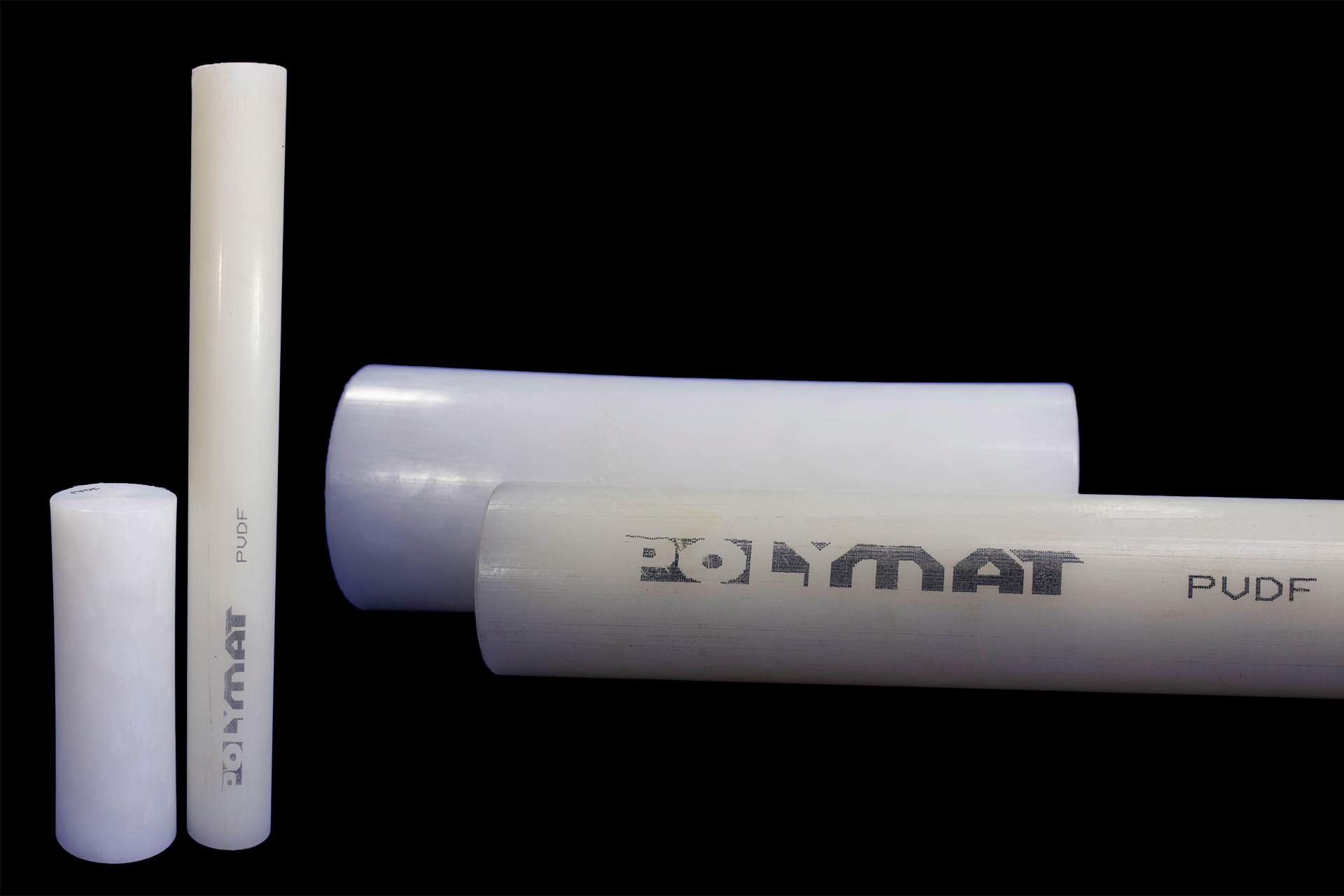
Polymat PVDF
Polyvinylidene Fluoride (PVDF) is a high-performance thermoplastic known for its outstanding chemical resistance, excellent mechanical properties, and superior thermal stability. PVDF is widely utilized across various industries, including chemical processing, pharmaceuticals, electronics, and energy, due to its unique characteristics.
Mechanical Properties
- Tensile Strength: PVDF 1000HD typically has a tensile strength in the range of 30-40 MPa (4,350-5,800 psi). This indicates good strength for resisting forces that attempt to stretch the material.
- Tensile Modulus: The tensile modulus, which measures the material’s stiffness, is around 1.5-2.0 GPa (220,000-290,000 psi). This reflects its relatively high stiffness and resistance to deformation under load.
- Impact Strength: PVDF generally has good impact resistance, though specific values for PVDF 1000HD can vary. Typically, its impact strength is lower than that of some other plastics but sufficient for many applications.
- Flexural Strength: The flexural strength of PVDF 1000HD is approximately 50-60 MPa (7,250-8,700 psi), indicating its ability to withstand bending forces without breaking.
- Hardness: PVDF 1000HD has a Rockwell hardness of around 80-85 R scale, reflecting its resistance to indentation and wear.
- Elongation at Break: PVDF usually has an elongation at break of around 20-30%, indicating its ability to deform before breaking.
Thermal Properties
- Heat Resistance: PVDF can withstand continuous service temperatures up to around 150°C (302°F), with specialized grades enduring up to 180°C (356°F), and has a melting point of approximately 177°C (351°F), allowing it to maintain structural integrity at elevated temperatures.
- Thermal Stability: PVDF exhibits good thermal stability and does not degrade easily under high temperatures. This stability makes it suitable for applications that involve exposure to elevated temperatures.
- Thermal Conductivity: PVDF has relatively low thermal conductivity compared to metals and some other polymers. This property can be advantageous in applications requiring thermal insulation.
Chemical Properties
- Chemical Resistance: PVDF is known for its excellent resistance to a wide range of chemicals, including acids, bases, and organic solvents. It is particularly resistant to strong acids and bases, chlorinated hydrocarbons, and most organic solvents. This makes it suitable for applications in harsh chemical environments.
- Temperature Stability: PVDF can maintain its chemical resistance at elevated temperatures, with a continuous service temperature range typically between -40°C to 150°C. Some grades can tolerate temperatures up to 175°C.
- Corrosion Resistance: Due to its inert nature, PVDF is resistant to corrosion and can be used in applications involving corrosive substances.
- Degradation Resistance: PVDF does not degrade easily under UV exposure or radiation, which adds to its durability in outdoor applications.
Applications
Chemical Processing:
PVDF is used for pipes and tubing in chemical processing due to its resistance to corrosive chemicals and high temperatures. TIt's used for lining tanks and containers to handle aggressive chemicals safely.
Oil and Gas:
PVDF is used in the oil and gas industry for its resistance to hydrocarbons and chemicals. It is employed in filtration systems, including membranes for separating chemicals and fluids.
Electronics:
PVDF is used in wire insulation and cable coatings because of its electrical insulating properties. PVDF is used in sensors and actuators due to its piezoelectric properties, which allow it to generate an electrical charge in response to mechanical stress.
Pharmaceutical and Biotech:
PVDF membranes are commonly used in filtration processes for pharmaceuticals and biotechnology applications due to their chemical resistance and high purity. Its resistance to contamination makes it ideal for use in pharmaceutical and biotech production facilities.
Semiconductor Manufacturing:
PVDF is used in semiconductor fabrication for its chemical resistance and ability to withstand the harsh cleaning chemicals used in the process. It's used in fume hoods and scrubbers to manage hazardous gases and vapors.
Construction and Architecture:
PVDF coatings are popular for exterior building facades due to their durability and resistance to weathering. It's used in roofing materials for its UV resistance and longevity.
Water Treatment:
PVDF membranes are used in water purification and desalination processes due to their filtration efficiency and resistance to fouling.
Automotive:
PVDF is used in coatings for automotive parts due to its resistance to chemicals and weathering.